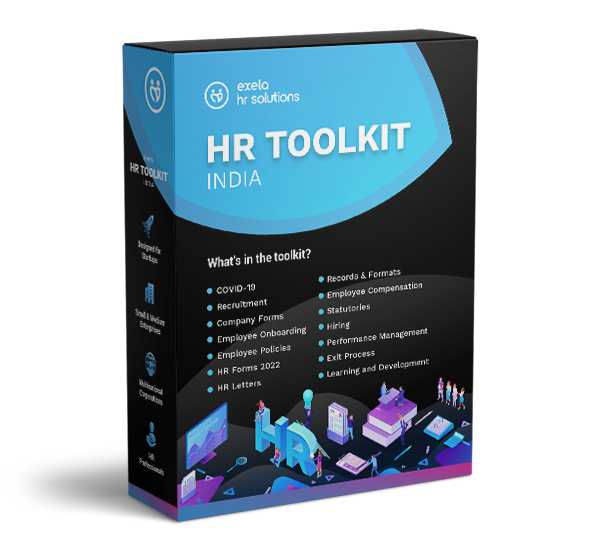
Organizations today are increasingly turning to Recruitment Process Outsourcing (RPO) to streamline their hiring processes and gain a competitive edge in the quest for top-tier talent. RPO partnerships have emerged as strategic collaborations that extend beyond mere outsourcing, fostering a holistic approach to recruitment.
At its core, RPO involves delegating all or part of an organization's recruitment processes to an external provider. This nuanced outsourcing model goes beyond transactional relationships, emphasizing a strategic and collaborative partnership.
In an era where attracting and retaining top talent is a business imperative, organizations must recognize the pivotal role of RPO partnerships in navigating the complexities of the talent landscape.
Dive into this blog to learn more about the three key tenets that form the foundation of a strong RPO partnership—Understanding the Organization's Needs, Building Trust and Transparency, and Leveraging Technology and Innovation. These tenets collectively contribute to the synergy necessary for a successful and enduring collaboration.
Three Pillars of a Robust RPO Partnership
-
Understanding the Organization's Needs
-
Conducting a Thorough Needs Analysis
-
Identifying Specific Hiring Challenges
a. Tailoring recruitment solutions: Organizations embarking on an RPO partnership must comprehensively analyze their specific hiring challenges. Understanding these challenges allows RPO providers to tailor their solutions effectively, whether it's high turnover rates, skill shortages, or a need for rapid scalability.
b. Customizing recruitment strategies: This involves a deep dive into the organization's historical hiring data, performance metrics, and any existing pain points that may hinder an efficient recruitment process.
-
Assessing Current Recruitment Processes
a. Mapping existing processes: Explore the significance of mapping out the organization's current recruitment processes. This involves scrutinizing each stage, from job posting to onboarding, to identify bottlenecks, redundancies, or areas for improvement.
b. Benchmarking against industry best practices: Encourage organizations to benchmark their current processes against industry best practices. This benchmarking exercise serves as a crucial foundation for aligning recruitment strategies with prevailing trends and ensuring the organization remains competitive in the talent market.
-
-
Establishing Clear Communication Channels
-
Regular Meetings and Check-ins
a. Frequency and purpose: Stress the importance of regular communication between the organization and the RPO provider. Weekly or bi-weekly meetings should be scheduled to discuss ongoing activities, address concerns, and ensure alignment with evolving organizational needs.
b. Agile adjustments: Emphasize the agile nature of these check-ins, allowing both parties to make real-time adjustments based on changing priorities, market dynamics, or feedback from hiring managers.
-
Utilizing Technology for Seamless Communication
a. Collaboration tools: Highlight the role of technology in facilitating seamless communication. Utilize collaboration tools, project management platforms, and communication apps to create a virtual workspace where information can be exchanged in real-time.
b. Transparency through technology: Showcase how technology enhances transparency, enabling both the organization and the RPO provider to access real-time data, track progress, and make data-driven decisions collaboratively.
-
-
Developing a Shared Understanding of Organizational Goals
-
Aligning Recruitment Strategies with Business Objectives
a. Strategic recruitment planning: Demonstrate the need for aligning recruitment strategies with broader business objectives. This involves a collaborative approach to ensure that hiring efforts contribute directly to the organization's growth, innovation, and overall success.
b. Long-term vision: Emphasize the importance of developing a shared long-term vision between the organization and the RPO provider. This collaborative vision serves as a guiding framework for recruitment initiatives, ensuring they are not only responsive to immediate needs but also strategically aligned with the organization's trajectory.
-
Setting Realistic and Measurable Targets
a. SMART goals: Introduce the concept of SMART (Specific, Measurable, Achievable, Relevant, Time-bound) goals as a framework for setting targets. This approach ensures that both parties clearly understand expectations, timelines, and success criteria.
b. Continuous refinement: Highlight the iterative nature of target setting, encouraging organizations and RPO providers to regularly evaluate and refine goals based on evolving organizational needs and external market dynamics.
-
-
-
Building Trust and Transparency
-
Open and Honest Communication
-
Sharing Feedback Openly
a. Constructive feedback culture: Emphasize the importance of cultivating a culture where feedback flows freely and constructively between the organization and the RPO provider. This openness fosters a collaborative atmosphere, enabling continuous improvement and adaptability.
b. Timely communication: Stress the significance of providing timely feedback to ensure that both parties can address issues promptly. Delays in communication can lead to misunderstandings, impacting the effectiveness of the partnership.
-
Addressing Challenges Proactively
a. Anticipating and addressing challenges: Encourage a proactive approach to identifying and addressing challenges. Organizations and RPO providers can strengthen their problem-solving capabilities and enhance partnership resilience by anticipating potential issues and collectively brainstorming solutions.
b. Learning from setbacks: Highlight the value of viewing challenges as learning opportunities. When setbacks occur, both parties must analyze root causes, implement corrective measures, and apply lessons learned to prevent similar issues in the future.
-
-
Establishing Clear Expectations
-
Defining Roles and Responsibilities
a. Role clarity: Stress the importance of clearly defining roles and responsibilities for both the organization and the RPO provider. This clarity ensures that each party understands its contributions to the partnership and can align efforts accordingly.
b. Collaborative decision-making: Illustrate how collaborative decision-making processes contribute to a sense of shared ownership. This approach involves implicating key stakeholders from both sides in strategic decisions, fostering a joint commitment to the partnership's success.
-
Agreeing on Key Performance Indicators (KPIs)
a. Identifying measurable outcomes: Discuss the significance of establishing Key Performance Indicators (KPIs) that align with the organization's overarching goals. These measurable outcomes serve as benchmarks for success, enabling continuous monitoring and evaluation.
b. Regular KPI reviews: Highlight the need for regular reviews of KPIs to track progress, identify areas for improvement, and celebrate achievements. This ongoing assessment ensures that the partnership remains agile and responsive to evolving needs.
-
-
Developing a Collaborative Mindset
-
Encouraging Teamwork and Mutual Support
a. Team-building activities: Advocate for team-building activities that bring together members from the organization and the RPO provider. This fosters a sense of camaraderie, breaking down silos and promoting collaboration.
b. Cross-functional collaboration: Illustrate the benefits of cross-functional collaboration, where teams from different departments work together seamlessly. This collaborative mindset extends beyond recruitment, positively influencing various aspects of organizational synergy.
-
Celebrating Successes Together
a. Recognition and appreciation: Emphasize the importance of acknowledging and celebrating successes, whether they are achieved through individual efforts or collective collaboration. This recognition reinforces a positive working relationship and motivates teams to sustain high performance.
b. Shared victories: Showcase examples of shared achievements where both the organization and the RPO provider contributed to successful recruitment outcomes. This reinforces the idea that success is a joint effort, further solidifying the collaborative mindset.
-
-
Also Read: Keep Hiring Healthy During Uncertain Times Using Flexi-RPO
-
Leveraging Technology and Innovation
-
Embracing Cutting-Edge Recruitment Tools
-
Applicant Tracking Systems (ATS)
a. Streamlining the recruitment process: Highlight the role of ATS in efficiently managing and tracking the entire recruitment lifecycle—from job posting to candidate onboarding. Discuss how the automation of administrative tasks allows recruiters to focus on more strategic aspects of talent acquisition.
b. Enhancing candidate experience: Illustrate how a user-friendly ATS can contribute to a positive candidate experience, from seamless application processes to timely communication. A positive candidate experience reflects well on the organization's employer brand and fosters a professional reputation.
-
Artificial Intelligence in Recruitment Processes
a. Intelligent sourcing: Explore how AI algorithms can enhance the sourcing process by analyzing vast datasets to identify candidates matching specific criteria. Discuss the efficiency gains and the ability to reach a broader pool of qualified candidates.
b. Predictive analytics for decision-making: Showcase how AI-driven predictive analytics can assist in making informed recruitment decisions. Organizations can better predict candidate success by analyzing historical data and patterns and aligning hiring strategies with desired outcomes.
-
-
Continuous Improvement Through Data Analysis
-
Regularly Reviewing Recruitment Metrics
a. Key recruitment metrics: Introduce key metrics such as time-to-fill, cost-per-hire, and quality-of-hire as critical indicators of recruitment success. Emphasize the importance of regular reviews to identify trends, areas for improvement, and opportunities for optimization.
b. Customized reporting: Discuss the benefits of customizable reporting dashboards that allow organizations and RPO providers to tailor data analysis to their specific needs. This customization enables a more nuanced understanding of recruitment performance.
-
Using Data-Driven Insights for Informed Decision-Making
a. Evidence-based decision-making: Advocate for a data-driven approach to decision-making, where insights from recruitment data inform strategies and tactics. Discuss how leveraging data can lead to more informed choices, reducing guesswork and enhancing overall recruitment effectiveness.
b. Adjusting strategies based on data: Provide examples of how organizations can adapt their recruitment strategies based on data insights. Whether it involves refining sourcing channels, adjusting candidate screening criteria, or optimizing interview processes, data-driven adjustments contribute to continuous improvement.
-
-
Staying Adaptable to Industry Trends
-
Keeping Abreast of Changes in the Recruitment Landscape
a. Rapidly evolving landscape: Discuss the dynamic nature of the recruitment landscape, characterized by shifting trends, emerging technologies, and changes in candidate expectations. Emphasize the need for continuous monitoring of industry developments to stay ahead of the curve.
b. Industry benchmarks: Encourage organizations and RPO providers to benchmark their practices against industry leaders. This benchmarking process helps identify areas where technology and innovation can be further leveraged to maintain a competitive edge.
-
Proactively Integrating New Technologies for Enhanced Efficiency
a. Early adoption of technologies: Highlight the advantages of proactively adopting new technologies that show promise in enhancing recruitment efficiency. Early adopters often gain a strategic advantage by staying ahead of competitors and attracting top talent with innovative processes.
b. Piloting and scaling: Discuss the strategy of piloting new technologies on a smaller scale before scaling up implementation. This approach allows organizations to assess the impact, identify potential challenges, and make adjustments before widespread adoption.
-
-
Conclusion
Fostering a strong Recruitment Process Outsourcing (RPO) partnership requires a strategic blend of understanding organizational needs, building trust and transparency, and leveraging technology and innovation. As organizations navigate the dynamic talent landscape, these three tenets serve as pillars for sustainable success in collaborative recruitment efforts.
At the forefront of delivering exceptional RPO solutions, Exela HR Solutions stands out as a reliable partner for organizations seeking tailored recruitment outsourcing. With a commitment to understanding unique organizational needs, fostering transparency, and harnessing innovative technologies, Exela HR Solutions ensures that each RPO partnership is a customized and impactful collaboration.
In a landscape where talent acquisition plays a pivotal role in organizational success, Exela HR Solutions sets the standard for excellence in RPO. Choose Exela HR Solutions for a transformative RPO experience tailored to your organization's distinct needs.
DISCLAIMER: The information on this site is for general information purposes only and is not intended to serve as legal advice. Laws governing the subject matter may change quickly, and Exela cannot guarantee that all the information on this site is current or correct. Should you have specific legal questions about any of the information on this site, you should consult with a licensed attorney in your area.





